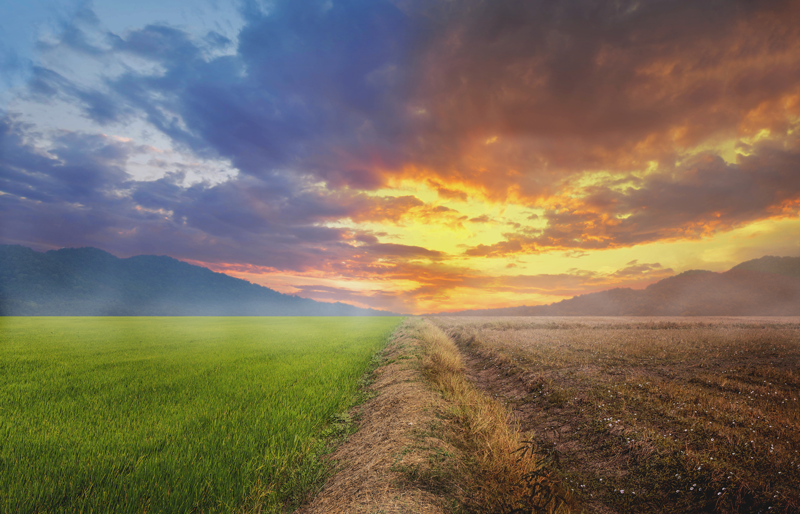The future of food depends on three main factors. These are climate change, farming methods, and people's food choices. As the world population grows, these issues become more important. Understanding the interplay among these elements is crucial for anticipating the challenges and opportunities that lie ahead in ensuring food security and sustainability.
Climate Change: The Overarching Influence
Climate change stands as the most significant force shaping the future of food. Rising temperatures, shifting precipitation patterns, and increasing frequency of extreme weather events are altering the agricultural landscape. These changes are impacting crop yields across the globe.
For instance, prolonged heatwaves and droughts can stress crops, reducing yields and affecting food availability. Some areas may have longer growing seasons and produce more crops. However, this can cause soil damage and other environmental issues.
The warming climate also accelerates the spread of pests and diseases, further threatening crop productivity. Farmers are grappling with these unpredictable conditions and must adapt quickly.
To lessen the effects of climate change on farming, we need to develop heat-resistant crops. We should also use more precise farming methods. Additionally, we must improve our water management.
Cropping Practices: Adapting to New Realities
In response to the challenges posed by climate change, cropping practices are evolving. Sustainable agriculture is at the forefront of these changes. This approach emphasizes practices that improve soil health, conserve water, and reduce reliance on synthetic chemicals. Techniques such as crop rotation, agroforestry, and conservation tillage help enhance soil fertility and resilience.
Additionally, advancements in agricultural technology are playing a crucial role. Precision agriculture, which utilizes data-driven approaches to optimize crop management, allows farmers to make informed decisions about planting, irrigation, and fertilization. This not only boosts crop yields but also minimizes environmental impact. Genetically modified (GM) crops are another area of innovation, offering traits such as drought resistance and pest tolerance.
Vertical farming and hydroponics are gaining traction as well. These methods can help you grow food indoors. This reduces the need for traditional farmland. It also helps address some issues related to climate change.
Consumers: Driving Change Through Demand
Consumer preferences and behaviors are increasingly shaping agricultural practices and food production. There is a growing demand for sustainably sourced and environmentally friendly products. People are more aware of how their food affects the environment, leading to changes in the market.
Organic products, plant-based diets, and local food movements are gaining popularity. These trends are influencing agricultural practices and encouraging farmers to adopt more sustainable methods. More people are choosing plant-based diets, leading to less animal farming. This change helps reduce greenhouse gas emissions, land use, and water consumption.
The transparency of food supply chains is also becoming a critical factor. Consumers are seeking information about the origins of their food and the practices used in its production. The need for transparency is making food producers use more sustainable and ethical practices, leading to ongoing improvement.
Looking Ahead: A Balanced Approach
The way we grow and eat food in the future will be influenced by climate change, new farming methods, and changing tastes. Addressing the challenges posed by climate change requires a multifaceted approach that includes innovation in agriculture, sustainable practices, and policy support. Consumers play a pivotal role by driving demand for sustainable products and supporting practices that mitigate environmental impact.
The future of food is uncertain. However, we can make it better.
We can do this by using new technology, adopting sustainable practices, and responding to changing consumer needs. We can build a better food system for the future. To do this, we need to understand how climate change, farming methods, and consumer choices are linked.
Take a look at our amazing line of products to help you with your farming needs.

